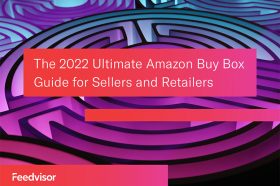Resources - Playbooks
The Ultimate Guide to Optimizing Your Returns Strategy on Amazon

Stay on top of the latest e-commerce and marketplace trends.
One of the most important aspects of running a successful Amazon operation is learning how to handle returns and adopting an efficient returns management strategy. Online retailers selling on the marketplace are expected to either match or exceed the standards of Amazon’s return policy — which states that any item, regardless of its condition, use, or defects, may be returned within 30 days of the purchase date for a full refund.
If your returns strategy is not optimized, you run the risk of receiving negative feedback, dealing with A-Z Claims, or even getting your account suspended. An A-Z Guarantee Claim can be filed for any of the following reasons related to returns: the customer has returned an item but hasn’t received the refund from you, you haven’t accepted a return request according to Amazon’s return policy, or the customer wants to return an international order and you have not provided a return address, prepaid label, or a full refund without the item being returned.
When one of your customers wants to return an item, you will be notified by email that a return request has been submitted. The email will include the customer’s reason for the return and Amazon will include a note if the reason doesn’t fall within the parameters of their return policy. Then, you will be able to decide which actions are best to take toward a resolution.
In our latest resource, The Ultimate Guide to Optimizing Your Returns Strategy on Amazon, we provide detailed, expert-approved techniques to ensure a healthy return rate, strategies to identify the root cause of a return and prevent it from happening again, and examples of how a streamlined returns management process can positively impact other aspects of your business. We shed light on the traditional approach to managing returns and then provide a fresh, innovative approach to navigating returns, akin to Amazon’s own in-house process.
Inclusive of in-depth steps on how to pinpoint the specific root cause of each return issue and where in the supply chain or delivery process the issue was ignited, being able to learn from historical mistakes will be beneficial in preventing them from happening again in the future. We also outline the differences between Fulfillment by Amazon and Merchant Fulfilled returns and provide insights as to how establishing Terms of Trade with your suppliers, despite fulfillment method, can add value to your online business.
Learn what Feedvisor can do for your business.
When you partner with Feedvisor, you automatically receive access to our true, AI-driven technology and hands-on team of e-commerce experts. Contact one of our team members today to learn more about our end-to-end solution for brands and large sellers on Amazon, Walmart, and e-marketplaces.


![7 Ways to Successfully Liquidate Amazon Inventory [Guide]](https://feedvisor.com/wp-content/uploads/2019/02/cover-amazon-7-ways-to-successfully-liquidate-inventory-280x186.jpg)
